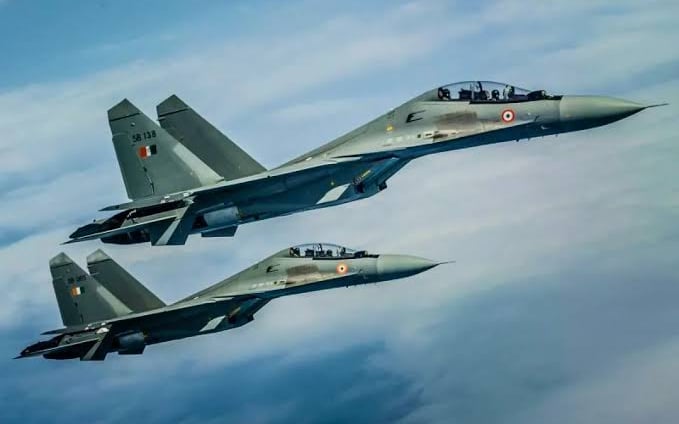Add your promotional text...
HAL Poised for Maharatna Status: A New Era in India’s Defence Modernization
Synopsis: Hindustan Aeronautics Limited (HAL) is set to achieve Maharatna status, marking a pivotal moment in India's defence sector. This upgrade will grant HAL greater financial and operational autonomy, enabling the company to invest more freely, expand globally, and contribute significantly to India’s self-reliant defence efforts. With recent financial growth and key projects in the pipeline, HAL is well-positioned to play a central role in the modernization of India's military and aerospace capabilities.
VIEWS ON NEWS
By Monika Agarwal
9/17/20243 min read


Hindustan Aeronautics Limited (HAL), a leading name in India's defence and aerospace industry, is on the verge of a significant upgrade as it awaits the government’s decision to elevate its status from Navratna to Maharatna. This potential change signals a major shift for the company, offering it broader financial and operational autonomy.
Understanding Maharatna Status
In India, Maharatna companies hold a prestigious place, representing the largest and most influential government-owned entities. These companies operate across a variety of sectors, including banking, energy, and manufacturing, contributing significantly to the country’s economic framework. The Maharatna designation, which means "great gem," grants public sector undertakings (PSUs) significant decision-making freedom and financial autonomy, enabling them to expand without relying on government approvals for larger projects.
HAL, which specializes in manufacturing aircraft and helicopters for the Indian armed forces, is set to join the ranks of these elite companies. With this designation, HAL would be in the company of major players like Bharat Heavy Electricals Limited (BHEL), Oil India, and NTPC, among others.
A Closer Look at HAL's Role in India's Defence Industry
Established in 1940, Hindustan Aeronautics Limited (HAL) has long been a cornerstone of India’s defence sector. The company is the country's only manufacturer capable of producing advanced fighter jets, helicopters, and drones for the Indian military. Its portfolio includes well-known aircraft like the Tejas Light Combat Aircraft (LCA), Su-30 MKI, and the Dornier Do-228. HAL also supports the Indian Space Research Organisation (ISRO) by contributing parts for the PSLV rockets.
As India's defence landscape shifts towards self-reliance, HAL has become a vital player in the modernization efforts. Its strong market position, coupled with its technical prowess, has made it indispensable in meeting the country’s aerospace needs.
What Maharatna Status Means for HAL
The Maharatna status, once granted, will open several doors for HAL, allowing it to significantly enhance its operations and global footprint:
1. Higher Investment Limits: HAL will be able to invest up to 15% of its net worth in projects without needing prior government approval. This flexibility will help the company undertake large-scale, high-impact projects swiftly.
2. Global Expansion: With the ability to invest up to ₹50 billion in foreign markets, HAL can explore international partnerships and grow its presence in global defence manufacturing.
3. Mergers & Acquisitions: Greater financial freedom will enable HAL to pursue mergers and acquisitions, both domestically and internationally, further consolidating its position in the aerospace industry.
4. Better Financing Options: The Maharatna tag will provide HAL with easier access to competitive financing, essential for funding advanced technologies and expanding its manufacturing capacity.
This increased autonomy is critical as India focuses on bolstering its defence capabilities through initiatives like "Aatmanirbhar Bharat" (self-reliant India). HAL is expected to play a central role in these modernization efforts, leveraging its upgraded status to drive innovation and scale production.
HAL’s Recent Achievements and Financial Growth
HAL has been making impressive strides in recent years. In a significant move, the Ministry of Defence awarded the company a contract worth ₹260 billion to manufacture 240 AL-31FP aero engines for the Su-30 MKI aircraft. This contract not only strengthens HAL's order book but also moves India closer to self-sufficiency in defence manufacturing.
Additionally, HAL has entered into partnerships with companies like SAFHAL Helicopter Engines Pvt Ltd to develop advanced helicopter engines, marking its shift towards more indigenous production.
Financially, HAL has shown strong growth:
Revenue for Q1 FY2024 increased by 11% year-on-year, reaching ₹43.5 billion.
Net profit surged by 77%, reaching ₹14.4 billion compared to ₹8.1 billion the previous year.
Over the three-year period from FY22 to FY24, HAL’s net sales grew at a compound annual growth rate (CAGR) of 15.2%, while operating profit saw a 31.9% CAGR.
HAL’s Future Outlook
Looking ahead, HAL is focused on increasing its production capacity to meet growing demand. The company is developing new fighter aircraft and helicopters, with plans to deliver 16 Tejas Mk-1A jets to the Indian Air Force by FY2025. Additionally, the expansion of its production lines in Bengaluru and Nashik will enable HAL to meet the rising needs of the Indian military.
A new helicopter manufacturing facility is also under construction in Tumkur, Karnataka, signaling HAL's commitment to scaling up operations to meet domestic and international demand.
In conclusion, As HAL inches closer to achieving Maharatna status, the company is set to embark on a new chapter of growth and innovation. With enhanced financial freedom and operational autonomy, HAL will be better positioned to drive India’s defence modernization efforts and expand its global footprint. The company’s continued success will not only benefit its stakeholders but also strengthen India’s position as a key player in the global aerospace and defence industry.
This potential milestone marks a significant leap forward for HAL and the broader Indian defence sector.
